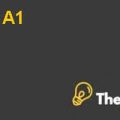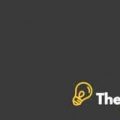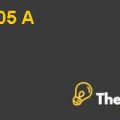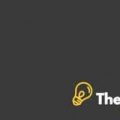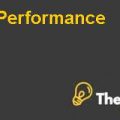ECCO A/S – Global Value Chain Management Case Solution
Introduction
Karl Toosbuy created ECCO with an objective to give pleasant walking. The ECCO was formed in 1963 in the city of Bredebro, Denmark. The company continuously develop and expands its operations with the same passion of craftsmanship. After a huge span of time of 40 years, the company is still committed to the same passion of providing design and comfort in the perfect fitted and pleasant shoe.
The company seeks to continuously develop the design and comfort of shoe irrespective of the climate conditions. The company set a vision to be the most wanted brand in the innovative and luxury footwear market. ECCO has set its objective to become the world’s most innovative and comfortable footwear.The company has a series of footwear products including all the outdoor and casual shoes.
The products are divided into four different categories including male, female, children and semi-sports shoes. ECCO offers new designs in all the categories in two different seasons. Most of the revenue of ECCO is generated from the ladies category of footwear which accounts for 47% of the total revenues followed by 30% by men category, 12% by sports and 11% by children.
Issues
The company has the desire to shift its production line to China due to low labor cost and taxes. The company is facing a number of issues in order to shift the production line to China. ECCO has faced challenges regarding the optimization of its value chain in order to distribute and procure. Another issue faced by ECCO is to make the decision on how they can shape their footwear products according to the Chinese market.
ECCO would have to adapt several strategies to compete against its rivals however,entering the Chinese market would expose the company to global competition. ECCO should also consider the issues regarding the expansion of the global competition. All these issues jointly disclose the major issue of the strategic fit regarding the expansion of the market and the global value chain of the ECCO.
Porter’s 5-Forces analysis
In order to analyze the competition in the industry, Porter’s five forces analysis has been performed. Moreover, Porter’s five forces analysis is known as the micro environment of the company. The need of Porter’s five forces has been observed in order to analyze how different factors are forcing the company to change its strategic decisions.
Bargaining Power of Buyers
The buyers for ECCO are generally retailers and customers. The bargaining power of the buyers is observed to be moderate due to the following factors.
- Huge number of players in the shoe market.
- No switching cost to buyers.
- Strong relationship between the ECCO and retailers.
- Few global players in the market for the leisure and innovative shoe market.
Bargaining Power of Suppliers
- Fully integrated Vertical Value Chain
- Most of the Production is in-house
- Only a few percentage is outsourced
- Huge number of suppliers
- No switching cost
- Material is available at low prices
- No Switching cost
- High competition in raw material suppliers
- Well defined policies for the quality check
Intensity of Competitive Rivalry
Clark, Geox and Timberland are assumed as the major competitors of ECCO. The intensity of the rivalry is high due to the following reasons.
- Same product offered by competitors
- Fierce Competition
- Innovations at its peak
- Cost optimization
- Competitive Pricing
- Changing consumer preferences
- Availability of low cost Chinese Copycat products at low prices.
-
Introduction to global market increase the number of competitors............... This is just a sample partial case solution. Please place the order on the website to order your own originally done case solution.

